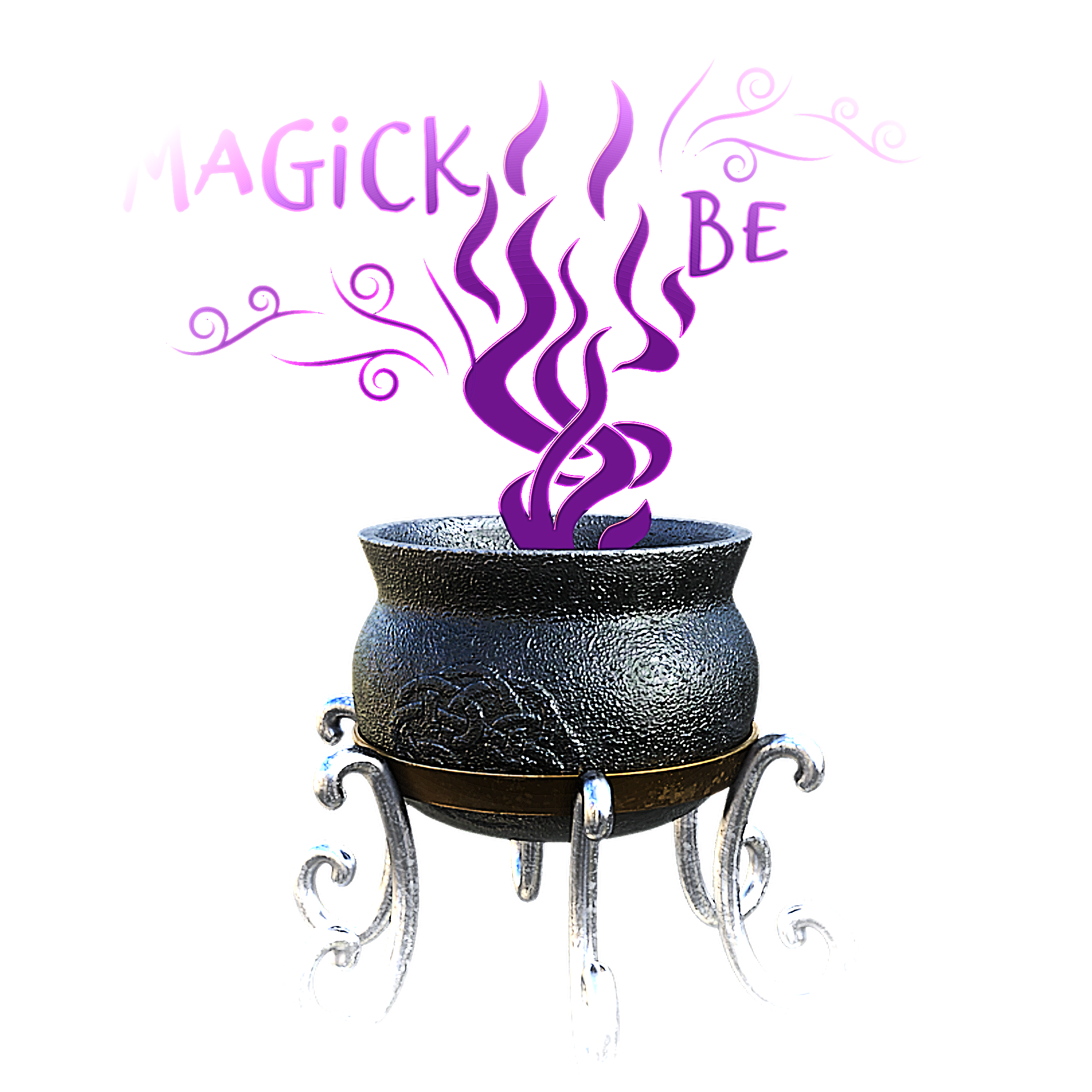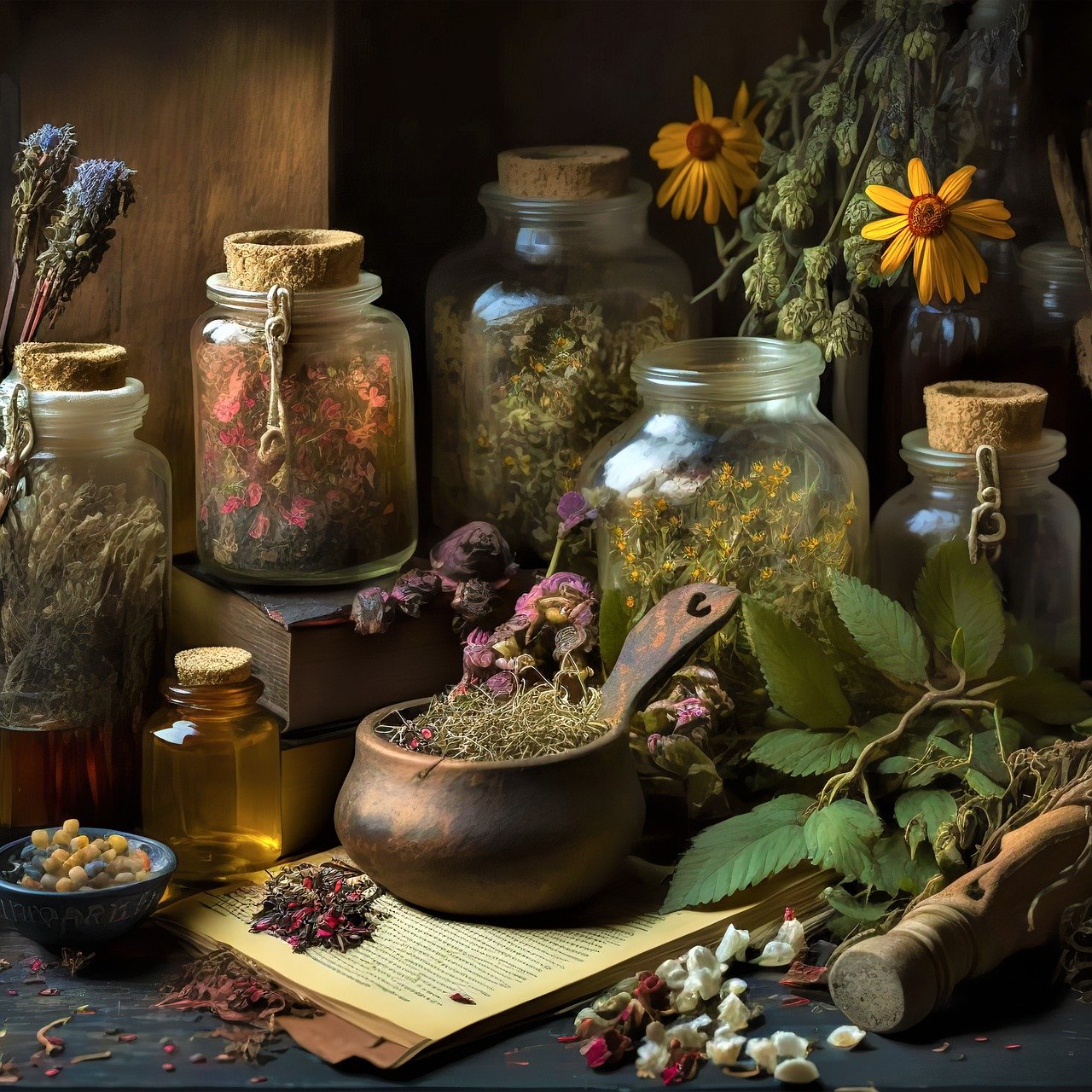Herbal Magick: Connecting with the Healing and Spiritual Properties of Plants ????。⋆✮.
Herbs have long been revered as powerful allies in magickal and spiritual practices. From ancient temples adorned with sacred offerings of frankincense and myrrh to modern kitchens where sage bundles are lit to cleanse a space, the wisdom of the plant kingdom offers an enduring connection to nature’s energy. By working with herbs, practitioners tap into their unique vibrations, healing properties, and symbolic meanings to enhance spells, create potions, and perform rituals. In this article, we explore the foundations of herbal magick, offering insights into its practical applications and guidance for cultivating your own magickal garden.
The Magickal Properties of Herbs
Every herb carries its own distinct energy and magickal associations. These properties often align with the plant’s traditional uses, folklore, and symbolic connections. For example:
- Rosemary: Associated with protection, purification, and memory, rosemary is often used in cleansing rituals and to strengthen mental clarity.
- Lavender: Known for its calming and soothing properties, lavender aids in love spells, relaxation, and dream work.
- Mint: A symbol of prosperity and healing, mint is used to attract abundance and invigorate energy.
- Mugwort: Revered for its association with intuition and psychic awareness, mugwort is a staple in divination and dream magick.
When selecting herbs for magickal work, consider their properties in both a practical and symbolic sense. Intuition also plays a vital role—allow yourself to be drawn to the herbs that resonate with your intentions.
Practical Applications of Herbal Magick
Herbs can be incorporated into magickal practice in countless ways, limited only by your creativity and intent. Here are some common methods:
- Spell Sachets and Mojo Bags:
- Combine dried herbs in small pouches to carry their energy with you. For example, a sachet filled with chamomile, basil, and bay leaves can attract prosperity and protection.
- Anointing Oils and Infusions:
- Steep herbs in a carrier oil to create anointing blends for candles, tools, or the body. Lavender and rose-infused oil, for instance, can be used in love and self-care rituals.
- Herbal Teas:
- Brew herbal teas with intention, such as chamomile for relaxation or peppermint for mental clarity. Be sure to research the safety of consuming specific herbs.
- Burning and Smoke Cleansing:
- Burn bundles of sage, cedar, or other herbs to cleanse a space of negative energy. Mugwort or juniper can be used to enhance intuitive work.
- Bath Rituals:
- Add herbs like rose petals, lavender, or calendula to your bath to create a sacred space for healing and relaxation.
- Altar Offerings:
- Place fresh or dried herbs on your altar as offerings to deities, ancestors, or the spirits of the land.
⋆‧⁺˖???? Cultivating a Magickal Garden ????‧⁺˖⋆
Growing your own herbs deepens your connection to their energy and allows you to work with them in their freshest form. Here are some tips for starting a magickal garden:
- Choose Your Plants Intentionally:
- Select herbs that align with your practice and intentions. Basil for protection, thyme for courage, and lemon balm for happiness are excellent choices for beginners.
- Create Sacred Space:
- Designate a special area in your garden or on your windowsill for your magickal plants. Consider adding stones, statuary, or other meaningful symbols to enhance the energy.
- Practice Magickal Gardening:
- Incorporate rituals into your gardening routine. Speak blessings over your seeds as you plant them, and water your herbs with moon-charged water.
- Harvest with Gratitude:
- When gathering herbs, thank the plant for its offering and take only what you need. This practice honors the spirit of the plant and maintains balance.
- Work with the Lunar Cycle:
- Align your gardening tasks with the moon’s phases. Plant seeds during the waxing moon for growth and harvest during the waning moon for release.
Connecting with Herbal Spirits
Many practitioners believe that each plant has a spirit or energy that can be communed with during magickal work. To connect with the spirit of an herb:
- Meditate with the plant or hold it in your hands while focusing on its energy.
- Spend time observing the herb in its natural environment, noting its growth patterns, scent, and appearance.
- Offer a small token of appreciation, such as water, song, or a whispered prayer.
Safety and Ethical Considerations
Working with herbs requires respect and knowledge. Keep these considerations in mind:
- Research: Ensure you understand the properties and potential toxicity of each herb, especially if ingesting them.
- Sustainability: Source herbs ethically and avoid overharvesting wild plants to protect their ecosystems.
- Allergies: Be mindful of potential allergic reactions when handling or using herbs.
Embracing the Magick of Plants
Herbal magick offers a profound way to align with the natural world and infuse your practice with the healing and transformative power of plants. Whether you’re sipping a mug of chamomile tea, burning rosemary for purification, or tending to a garden under the light of the moon, you are participating in an ancient tradition that bridges the realms of the physical and the spiritual. Through intention, connection, and care, the plant kingdom becomes both a partner and a teacher in your magickal journey.
Herb Collection Ritual: Honoring Nature and Enhancing Magickal Practice ????
Collecting herbs for magickal purposes is a sacred act that connects you to the natural world and its boundless energy. This ritual teaches you how to choose, cut, dry, and use plants with respect, ensuring that your practice is harmonious and aligned with the spirit of the Earth.
Step 1: Preparation and Setting Intention
Before gathering herbs, prepare yourself and your space with mindfulness.
- Meditate on Your Purpose: Spend a few minutes in quiet reflection, focusing on the intention behind your herb collection. Are you seeking protection, healing, love, or clarity? Let this purpose guide your actions.
- Gather Your Tools:
- A small, sharp blade or pair of scissors (preferably dedicated to magickal use).
- A basket or cloth bag to carry the herbs.
- An offering for the plants (e.g., a pinch of tobacco, a few seeds, a strand of hair, or a small crystal).
- Choose the Right Time: Align your collection with the natural rhythms of the Earth. The waxing moon is ideal for gathering herbs that promote growth and abundance, while the waning moon is suited for banishing and release. Early morning, when the dew is fresh, is considered the most potent time.
Step 2: Connecting with the Plants
Building a relationship with the plants you intend to harvest ensures your practice is respectful and effective.
- Observe the Environment: Take a moment to appreciate the surroundings. Notice the light, the scent of the air, and the sounds of nature. This mindfulness fosters a sense of gratitude.
- Ask for Permission: Stand before the plant you wish to collect and silently or aloud ask for its consent. Trust your intuition—a sense of ease and openness often indicates a positive response.
- Offer Gratitude: Before cutting, leave your offering at the base of the plant or nearby. This act of reciprocity honors the plant’s spirit and reinforces the sacred exchange.
Step 3: Harvesting with Care
When gathering herbs, do so mindfully to preserve the plant’s health and vitality.
- Cut with Respect: Use your blade or scissors to make a clean cut. Avoid yanking or breaking stems, as this can harm the plant.
- Collect only what you need, leaving enough for the plant to thrive and for wildlife to benefit.
- Take from multiple plants rather than over-harvesting a single one.
- Focus on Intention: As you cut, visualize the energy of the plant merging with your purpose. For example, imagine the protective energy of rosemary enveloping your aura or the calming essence of lavender soothing your spirit.
- Thank the Plant: After cutting, place your hand on the plant and express your gratitude. A simple, heartfelt “Thank you” suffices.
Step 4: Drying and Storing Herbs
Proper drying and storage ensure your herbs retain their potency and are ready for magickal use.
- Drying:
- Gather the herbs into small bundles and secure them with twine.
- Hang the bundles upside down in a warm, dry place with good air circulation. Avoid direct sunlight to preserve color and energy.
- For delicate herbs, consider using a drying rack or dehydrator.
- Storing:
- Once dried, store your herbs in glass jars, paper bags, or cloth pouches. Label each with the herb’s name and collection date.
- Keep them in a cool, dark place to maintain their magickal properties.
Step 5: Using Herbs in Magickal Work
The herbs you’ve gathered can now be incorporated into your rituals and spells.
- Spell Crafting: Use herbs to create sachets, oils, or incense tailored to your intentions. For example, combine basil, bay leaf, and cinnamon for prosperity, or lavender and chamomile for peace.
- Ritual Baths: Add herbs to your bath to infuse the water with their energy. Wrap the herbs in a muslin bag to prevent clogging the drain.
- Candle Magick: Sprinkle herbs around a candle or roll an anointed candle in crushed herbs to amplify its power.
- Offerings: Place herbs on your altar as offerings to deities, ancestors, or spirits.
Final Thoughts
Collecting herbs with respect and intention transforms a simple act into a profound spiritual practice. By honoring the life force within each plant, you strengthen your connection to the natural world and enhance your magickal workings. With time and care, your relationship with the plant kingdom will deepen, revealing the boundless wisdom and energy it holds.


